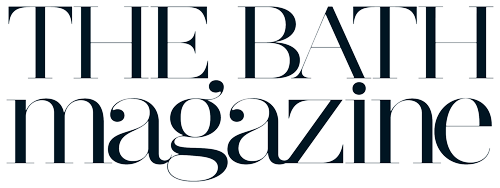The lure of Milan Design Week is strong for designers and aficionados wanting to keep up with the latest movements in interior design. John Law from Woodhouse & Law was there and give us an account of the new, exciting and emerging trends.
T he world of interiors is ever-changing and evolving, offering us inspiration, anticipation and the odd surprise in equal measures. Keen to keep on top of the latest emerging trends, our team will visit many of the interior trade shows each year, whether here in the UK or further afield on the continent. Most recently we were fortunate enough to attend Salone del Mobile in Milan, returning to its traditional April time slot for the first time since the start of the pandemic. The annual event is the largest trade fair of its kind in the world, with almost 2,000 furniture exhibitors and over 300,000 attendees visiting from all corners of the globe.
Spanning hall after hall at the sprawling FieraMilano complex, the event is undeniably one of the highlights of the interiors calendar, one embraced and celebrated by the whole city. Coming together under the banner of Milan Design Week, designers and manufacturers add to the buzz by opening up a wealth of venues throughout the city. From ancient palazzos to derelict industrial units, the spaces are transformed for the week, offering exhibitions, workshops and the opportunity to entertain, celebrate and debate.
Integrating natural elements – with their rich diversity of life, shapes and colours – is fast gaining a dedicated following for its ability to improve our well-being
For us, this provides the perfect opportunity to identify those new, exciting and emerging trends. And this year didn’t fail to impress, with noticeable shifts not only in colour palettes, materials and techniques, but also in our approach to design and manufacture in a digital world – one of fast demand and fickle loyalties.
Some trends looked familiar, nostalgic even. Browns featured highly for instance – in wall treatments, materials and furniture alike. Once exiled and avoided for fear of throwback to the seventies and eighties, the colour was back, warmed up and ready for a fight. With back-up from other equally earthy tones, from terracotta pinks to warming caramels, the long-standing rule of the grey regime was decidedly over.
The newly appointed reigning tones instead offered a distinctly warm, calming and comforting atmosphere, perhaps born from a need for us all to cocoon after a number of turbulent years. It makes sense therefore that this movement joined at the show by an embracing of biophilic design, bringing the outdoors in and improving our connection to nature and the environment. Integrating natural elements – with their rich diversity of life, shapes and colours – is fast gaining a dedicated following for its ability to greatly improve our well-being and creativity. The show was testament to this, with a growing number of pieces made from natural stone and wood, often with curved lines and soft shapes to instil a more natural, organic feel to a scheme.

This use of natural materials also had a greater nod to sustainability than ever before. Alongside those more traditional ingredients stood the more unusual, with waste materials from other industries often being incorporated to reduce the environmental impact of these new products. Surplus sheep’s wool was used in place of plastic upholstery foam, waste hemp fibres were used to fortify bioplastic in compostable chairs and acoustic panels featured a byproduct of rice production. While some manufacturers returned to traditional craftsmanship, others looked to new technological developments for their latest collections. Take The New Raw, a young studio from the Netherlands. Using 3D printing, and inspired by traditional knitting techniques, continuous threads of plastic waste were threaded to create a series of tactile benches, permeable and strong enough to be used both inside and out.
Throughout the show, this meeting of the digital and the physical was omnipresent. New York artist Ryan Decker showcased for instance his latest collection of lights, combining textures created by artificial intelligence with digital renders to turn flat sheets of aluminium into three dimensional sculptural, alien-like pieces.
Despite this embracing of the latest technological innovations, there looked to be a determined backlash against the more Instagram friendly installations that had previously dominated the show. These had, in recent years, drawn in many a visitor and influencer keen to grab an image worthy of social media. This year however the emphasis seemed to be more on the experiential. With more pared-back scenography, designers ensured that the pieces and their craftsmanship took centre stage.
For some though, maximalism was still going nowhere anytime soon. Often a polarising aesthetic, mixing bold colours with just as striking patterns and textures, there were some designers that defied the move to a more restrained, calming palette. Some came from small boutique designers such as La DoubleJ, who transformed eight bathrooms around the city house venues with their daring printed papers. Others came from the more expected, such as Dolce and Gabbana. With sales of furniture growing exponentially after restrictions were eased, this proved one of many luxury fashion houses keen to create an impact and improve their market share. Big names were in force, with Dior collaborating with designer Philippe Starck to reimagine their iconic Medallion Chair. A reflection perhaps of a show that seamlessly combined the traditional with a definite eye to the future.
Click here to visit the Woodhouse and Law website


